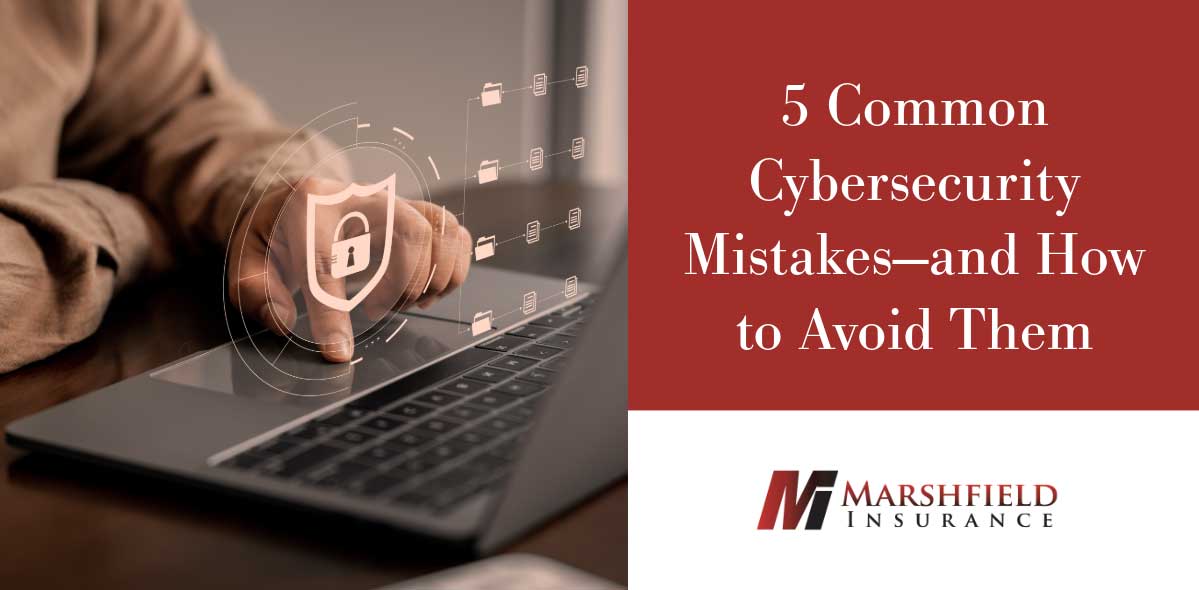Cyberattacks are a growing threat to organizations of all sizes and industries. Cybercriminals are constantly evolving their tactics, seeking vulnerabilities they can exploit to access sensitive data, disrupt operations, and cause financial and reputational damage.
Fortunately, many of the most common cybersecurity mistakes are easy to correct with practical steps. Here’s a breakdown of five mistakes companies often make—and how to address them before they become costly.
1. Weak or Reused Passwords
The Mistake:
Employees often choose simple, easy-to-remember passwords—or worse, reuse the same password across multiple systems.
Why It Matters:
Weak passwords are easy for cybercriminals to guess or crack, and using the same one across systems can lead to a cascade of compromised accounts.
How to Avoid It:
Require strong, unique passwords for each device, network, and account.
Enforce regular password updates.
Avoid predictable passwords (e.g., “password123”).
Encourage the use of password managers to securely store and generate passwords.
2. Ignoring Software Updates
The Mistake:
Delaying or skipping software and system updates.
Why It Matters:
Updates often include security patches for known vulnerabilities. Skipping them leaves your systems exposed to known threats.
How to Avoid It:
Enable automatic updates on all devices and applications.
Set up regular review processes to ensure updates are completed.
Pay special attention to updates for antivirus and intrusion prevention systems.
Monitor vendor notifications for critical security updates.
3. Lack of Employee Training
The Mistake:
Overlooking cybersecurity awareness and training for staff.
Why It Matters:
Employees are a frequent entry point for cyberattacks. Phishing, social engineering, and careless data handling can lead to major breaches.
How to Avoid It:
Implement cybersecurity training at onboarding and continue it regularly.
Use real-world scenarios and interactive learning.
Foster an open culture that encourages employees to ask questions and report suspicious activity.
4. Overlooking Multifactor Authentication (MFA)
The Mistake:
Relying solely on passwords to secure sensitive data and systems.
Why It Matters:
Passwords can be compromised. MFA adds an essential layer of protection by requiring additional verification.
How to Avoid It:
Require MFA for all critical business systems and accounts.
Use authentication apps or hardware tokens for added security.
Review MFA settings periodically and update them as needed.
5. Using Unsecured Public Wi-Fi
The Mistake:
Accessing sensitive information over public Wi-Fi networks without protection.
Why It Matters:
Public Wi-Fi is a common target for cybercriminals who intercept data through “man-in-the-middle” attacks.
How to Avoid It:
Avoid accessing sensitive data on public networks.
Use a VPN to encrypt your connection.
Turn off automatic Wi-Fi and file-sharing settings.
Ensure firewalls are enabled on all devices.
Final Thoughts
Cybercriminals thrive on small oversights. By understanding and correcting these common mistakes, your organization can significantly reduce its exposure to cyber threats. Strong cybersecurity doesn’t have to be expensive—it just requires a proactive mindset and consistent implementation.
Have questions about cyber liability insurance or how to protect your business from cyber risks?
📞 Contact Marshfield Insurance today to learn more.
Disclaimer: This Cyber Risks & Liabilities document is not intended to be exhaustive nor should any discussion or opinions be construed as legal advice. Readers should contact legal counsel or an insurance professional for appropriate advice.
© 2025 Zywave, Inc. All rights reserved.

